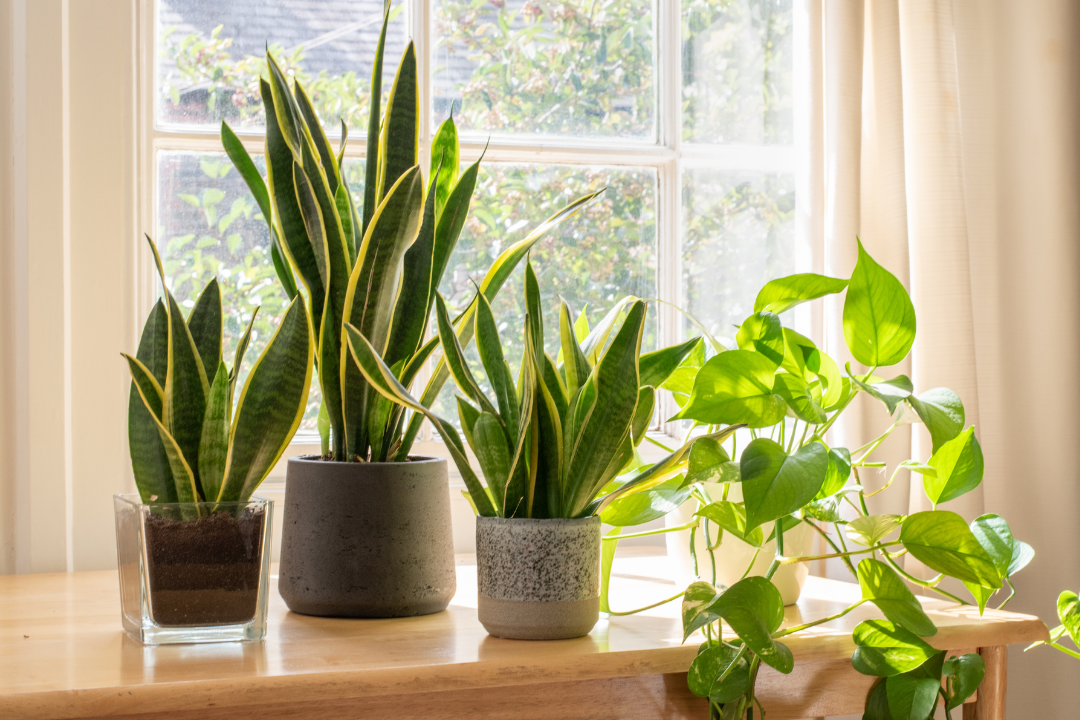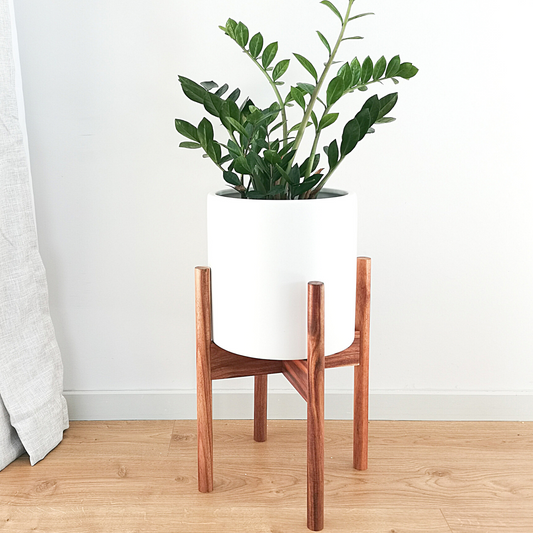
Plants not only enhance the aesthetic appeal of our homes but also offer a multitude of benefits for our overall well-being. While it is a well-known fact that plants release oxygen, which is vital for us, their mere presence can significantly uplift our mood.
Beyond these advantages, plants possess the remarkable ability to purify the air within our homes. Just consider the potential savings on air-purifier devices by harnessing the power of nature. As natural air purifiers, plants offer an organic and eco-friendly solution, yielding even better results.
However, it's important to select specific plants that excel at purifying indoor air. While all plants contribute positively, there are certain varieties that are particularly effective in this role. By carefully choosing these plants, you can optimize the air quality in your home and reap the maximum benefits.
Can Air-Purifying Plants Really Cleanse the Air? NASA's Research Confirms It!
If you still harbor doubts about the air-purifying abilities of these plants, let us put them to rest by citing NASA's extensive research. As far back as 1989, NASA conducted a study that revealed the remarkable air-cleansing properties of these plants, specifically in the context of indoor environments.
While it's true that a substantial number of these plants is necessary to achieve optimal air purification, even starting with a small collection can make a noticeable difference in freshening your indoor air quality.
With this confirmation in mind, we hope you are now convinced of the effectiveness of air-purifying plants. To assist you in selecting the most suitable plant for your home, we have curated a comprehensive list in this article. Furthermore, we have included valuable care tips for each plant, ensuring their longevity and vitality in your indoor space.
7 Air-Purifying Indoor Plants and How To Care For Them
1. Snake Plant

Also known as mother-in-law's-tongue, the snake plant is not only aesthetically pleasing but also packs a punch when it comes to purifying the air in your home. This resilient plant is hailed as one of the best air-purifying options available.
The snake plant's unique attribute lies in its broader leaves, which allow it to efficiently absorb a variety of harmful toxins from the air. These toxins include formaldehyde, benzene, xylene, and trichloroethylene, commonly found in household products, paints, and furniture. By having snake plants in your living spaces, you can significantly improve the air quality and create a healthier environment for you and your loved ones.
In addition to its air-purifying abilities, the snake plant has been found to release oxygen at night, making it a wonderful addition to your bedroom. This natural process can enhance the quality of your sleep by increasing oxygen levels and reducing the presence of carbon dioxide.
🌱 Plant care: When it comes to caring for your snake plant, it's important to note that they thrive in slightly drier conditions. Overwatering can be detrimental to their health, so it's best to let the soil fully dry out between waterings. These versatile plants can tolerate both shady corners and well-lit areas, making them suitable for various indoor locations. To make your snake plant happy, here’s an in-depth snake plant care.
2. Philodendron

With their stunning large and glossy green leaves, philodendrons effortlessly add a touch of natural elegance to any corner of your home that could use a vibrant boost. Not only are they visually appealing, but philodendrons are also a dream come true for new plant parents due to their easy-to-care-for nature.
Interestingly, different types of philodendrons, such as the heart-leaf and elephant-ear varieties, excel in filtering out toxins like formaldehyde from the air. This makes them an invaluable asset in improving the air quality of your indoor spaces, especially in areas where synthetic materials or household products contribute to poor air circulation.
While philodendrons are a splendid addition to your home, it's essential to exercise caution and keep them out of reach of children and pets. Ingesting philodendron leaves can cause discomfort, so it's advisable to place them in areas where curious hands and paws won't be tempted.
🌱 Plant Care: Philodendrons thrive in warm and moist environments, making them ideal for bright, indirect light conditions. Find a well-lit spot where they can bask in gentle sunlight without being directly exposed to harsh rays. When it comes to watering, philodendrons appreciate regular but moderate watering. It's important to allow the top layer of soil to dry out between waterings to prevent overwatering, which can lead to root rot.
3. Peace Lily

Renowned for its lush green foliage and broad leaves, the Peace Lily captivates plant enthusiasts with an additional enchanting feature—the presence of its elegant white "bloom." But here's a fascinating fact: the eye-catching white "flower" is not actually a flower at all but a specialized leaf that gracefully conceals the true flowers within!
Beyond its aesthetic appeal, the Peace Lily has gained popularity as a favorite household plant for its remarkable ability to reduce air pollution. This botanical gem effectively purifies the air, helping to eliminate harmful toxins and improving the overall air quality in your living space. However, it's crucial to be aware that while the Peace Lily works wonders for air purification, it poses a threat to pets as it contains toxins that can be harmful if ingested.
🌱 Plant Care: To ensure the healthy growth of Peace Lilies, provide them with bright, indirect light, allowing their foliage to bask in gentle sunlight without direct exposure to intense rays. This plant thrives in soil that remains consistently moist, so regular watering is essential. However, here's an interesting twist—Peace Lilies prefer to be watered with distilled or rainwater. The use of these water sources helps prevent the accumulation of mineral deposits on the leaves, keeping them vibrant and healthy.
4. Pothos

Pothos, also known as Devil's Ivy, is a captivating vine plant featuring semi-heart-shaped leaves. What sets Pothos apart as an exceptional interior decor choice is not only its trailing and creeping nature but also the vibrant burst of yellow highlights that adorn its foliage.
In addition to its visual appeal, Pothos has been scientifically proven to be an effective air-purifying plant. This botanical gem has the remarkable ability to absorb pollutants such as formaldehyde and benzene, which can be found in common household items and materials.
🌱 Plant Care: Pothos is a resilient plant that can adapt to a wide range of light conditions, making it one of the easiest plants to keep alive and thriving. It can tolerate both low light and brighter spots, making it suitable for various areas within your home. While Pothos can survive in less favorable light conditions, it flourishes when placed in a brighter location.
5. Chinese Evergreen

Chinese Evergreen, also known as Aglaonema, offers a delightful array of varieties, each with its own unique characteristics. The most common type features elongated leaves adorned with captivating white speckles. However, this plant goes beyond its visually appealing qualities, as it is available in a wide range of colors, including stunning shades of red, orange, and dark green. With such diversity, the Chinese Evergreen effortlessly adds a touch of elegance and intrigue to any room it graces.
In addition to its aesthetic charm, the Chinese Evergreen boasts exceptional air-purifying capabilities. This remarkable plant has the ability to filter and eliminate toxins commonly found in household detergents and cosmetics. By having Chinese Evergreen in your home, you can create a healthier living environment by reducing the presence of harmful pollutants.
🌱 Plant Care: Chinese Evergreen thrives in a humid environment and prefers low to medium light conditions. It adapts well to indoor spaces where natural light may be limited, making it an ideal choice for areas away from direct sunlight. To maintain the plant's lush appearance, occasional misting with water is recommended, as it helps prevent the leaves from browning and keeps the humidity levels favorable for its growth.
6. Bamboo Palm

The Bamboo Palm, scientifically known as Chamaedorea seifrizii, is a captivating plant that brings a touch of tropical paradise to any space. With its graceful, feathery fronds and slender stems resembling bamboo, this palm species offers a serene and tranquil ambiance to your home or office.
Beyond its visual appeal, the Bamboo Palm provides numerous benefits for indoor environments. It is particularly adept at improving air quality by effectively filtering out common indoor air pollutants such as formaldehyde, benzene, and trichloroethylene. This makes it an excellent choice for spaces where synthetic materials, cleaning products, or furnishings contribute to poor air circulation.
Adding to its allure, the Bamboo Palm is also known for its ability to naturally humidify the air, creating a more comfortable and refreshing atmosphere, especially in drier climates or during the winter months when indoor air tends to be dry.
🌱 Plant Care: The Bamboo Palm thrives in bright, indirect light, but it can tolerate lower light conditions as well. It prefers slightly moist soil, so be sure to water it regularly, allowing the top layer of soil to dry out between waterings. Additionally, providing a humid environment by misting the fronds or placing the plant on a tray filled with pebbles and water can help mimic its natural tropical habitat.
7. Aloe Vera

Aloe Vera, with its unique and succulent appearance, serves not only as a decorative houseplant but also as a natural remedy for sunburns and skin irritations. This petite plant brings a touch of beauty to your windowsills, work desk, or coffee table while offering a host of beneficial properties.
However, Aloe Vera's benefits extend beyond its therapeutic uses. It is also an effective air purifier, contributing to a healthier indoor environment. This remarkable plant has the ability to remove pollutants such as formaldehyde and benzene, which are often present in varnishes and floor finishes, thus helping to improve air quality.
🌱 Plant Care: Aloe Vera thrives in bright light conditions, so it is best to place it in a spot where it can receive ample sunlight. Its thick and fleshy leaves are adapted to store water, making it a low-maintenance plant. Water your Aloe Vera approximately once a week, ensuring that the soil is completely dry before each watering. Overwatering can lead to root rot, so it's important to allow the soil to dry out between waterings.

Other popular air-purifying plants:
- Weeping pig or ficus
- Spider plant
- Chrysanthemum
- Dracaena
- ZZ plant
- Rubber plant
And that’s it for our list of air-purifying plants! Do you own any of these plants? Let us know in the comments!









